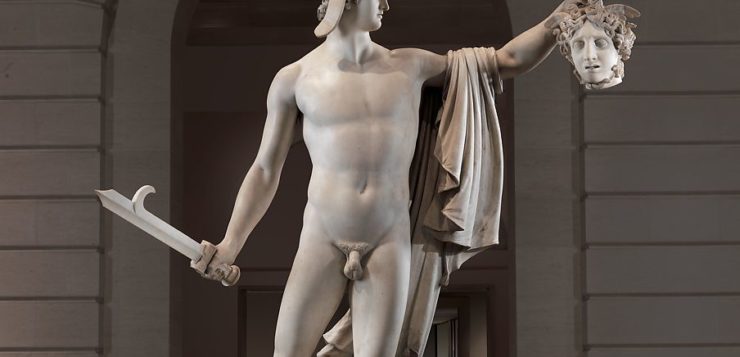I WAS IN LOVE with museums before I ever visited one. My parents had a small, battered, brown suitcase filled with art postcards from London, Paris, and all across Belgium, where they lived for five years after World War II. They never spoke much about surviving the Holocaust, and the hundreds of postcards seemed to fill that silence for me.
Europe meant art back then, not death and destruction, and I communed with those images as intently as someone deep in prayer. Sitting on the linoleum-covered floor in front of them, I could have been one of those guys in a science fiction movie opening a mysterious box whose unseen contents give off an unearthly and mesmerizing glow. My Washington Heights bedroom had an unobstructed view of the George Washington Bridge, and watching its lights come on at dusk was one of my quiet joys, as soothing as poring over these photos of statues and paintings.
But nothing prepared me for the revelations on my first visit to the Metropolitan Museum of Art. A fan of ancient Greek history and Greek myths in elementary school, I was immediately drawn to the galleries of Greek and Roman statues. I already sensed that I was different from my classmates, and I was electrified by the bold nudity on one pedestal after another, bathed in tender natural light from above, or so it seemed, and lit up more by their own perfection. With my parents off in some other gallery, I wandered and stared and studied. Who could accuse me of anything unwholesome or dangerous? I felt safe there, sheltered, wordlessly embraced.

It was a much later piece, though, that changed my life: Antonio Canova’s early 19th-century Perseus with the Head of Medusa. At the time, this statue loomed on a landing at the top of a mammoth staircase, its placement making the space around it feel like an altar. I knew nothing of the neoclassical Italian sculptor, but I had read about Perseus the monster slayer and the snake-headed Gorgon Medusa, whose stare could turn people to stone. Who wouldn’t want a gift like that? Even cut from her body, the eyes in that head were fearful weapons.
Shy then, bookish, easily bullied, and living in the shadow of an older brother who seemed to get all the attention I craved, I relished the Perseus, would have gulped it down if it were a drink. Easily three times my size, Perseus was all graceful, cool triumph as he held Medusa’s grotesque head at arm’s length. His strength, his beauty, and yes, his perfect nude body, filled me with longing not just to be him, but to create something, anything.
I returned to him on each visit, engrossed, inspired. Many years later I wrote a story in which he figures as an icon of gay desire. If I were a budding artist in those early visits, I would have brought a pad to sketch his beauty, to make it more my own. Every statue from the ancient world that I’ve encountered since that day, whether in the Santa Barbara Museum or Berlin’s Pergamon Museum, reminds me of the discovery of such unparalleled beauty and the nascent discoveries of self that waited for me in my teens.
I’ve even felt Perseus’ power at London’s Tate Modern while exploring a special exhibition of Brancusi’s abstract statues, which could not have been more unlike Canova’s work, but their beauty somehow triggered vivid memories of his Perseus. I drifted through those near-empty galleries, back and forth, almost as dazed as Henry James when he first visited Rome and “went reeling and moaning thro’ the streets, in a fever of enjoyment.” Those statues and my childhood memories made me cry, which alarmed the nearest guard. I muttered something about being overwhelmed and wandered off, dazed but fulfilled.
Lev Raphael, a pioneer in queer Jewish writing and author of 27 books, mentors and edits writers at writewithoutborders.com.






